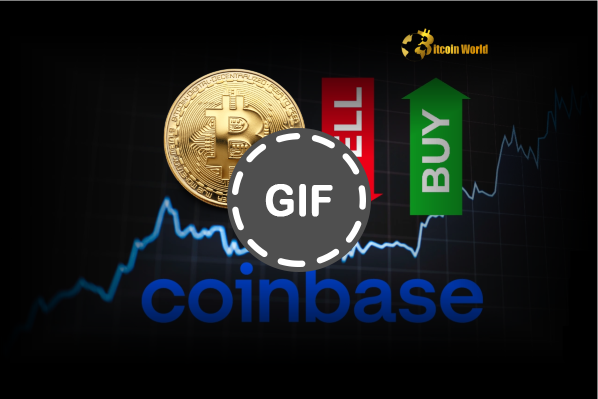BitcoinWorld

GBP/USD: Unveiling the Perilous Path for Pound Sterling Amidst Political and Fiscal Turmoil
For anyone engaged in the dynamic world of cryptocurrency and traditional finance, understanding the broader macroeconomic landscape is paramount. While digital assets often capture headlines, the stability and direction of major fiat currencies like the British Pound (GBP) against the US Dollar (USD) can significantly influence global market sentiment and capital flows. The GBP/USD forecast, in particular, is currently shrouded in uncertainty, as the Pound faces a confluence of political and fiscal challenges that could dictate its trajectory for months to come. This article delves deep into these critical factors, offering a comprehensive Pound Sterling analysis to help you navigate the complex terrain.
What’s Driving the GBP/USD Volatility? Unpacking Political and Fiscal Risks
The British Pound’s recent movements against the US Dollar have been characterized by heightened volatility, largely attributable to a complex interplay of domestic political instability and persistent fiscal pressures. These factors create an environment of unpredictability, making a precise GBP/USD forecast challenging for even the most seasoned analysts.
Political Landscape: A Shifting Sand
- Electoral Uncertainty: With a general election on the horizon, the prospect of a change in government introduces policy uncertainty. Different parties propose varying approaches to economic management, taxation, and public spending, all of which can significantly impact investor confidence and the Pound’s value. The potential for a hung parliament or a narrow majority further complicates the outlook, suggesting prolonged policy debates.
- Brexit’s Lingering Shadow: While Brexit is a done deal, its economic ramifications continue to unfold. Trade friction with the European Union, labor shortages in key sectors, and reduced foreign direct investment remain ongoing concerns. Any new developments or disputes related to the Northern Ireland Protocol could reignite political tensions and weigh heavily on the Pound.
- Government Stability: Frequent changes in leadership or significant cabinet reshuffles can undermine confidence in the government’s ability to implement long-term economic strategies effectively. Such instability often translates into a weaker currency as investors seek more predictable environments.
Fiscal Challenges: The Burden of Debt
- High Public Debt: The UK’s public debt has swelled significantly due to pandemic-era spending and energy support packages. Servicing this debt becomes more expensive as interest rates rise, putting further pressure on public finances.
- Budget Deficits: Persistent budget deficits, where government spending outstrips revenue, necessitate increased borrowing. This can lead to concerns about fiscal sustainability and potentially trigger a downgrade in the UK’s credit rating, making it more expensive for the government to borrow and negatively impacting the Pound.
- Taxation and Spending Plans: The government’s approach to balancing the books – whether through tax increases, spending cuts, or a combination – will have direct implications for economic growth and inflation. Austerity measures might dampen consumer spending, while excessive spending without clear revenue generation could fuel inflation.
These interwoven political and fiscal risks contribute significantly to the Forex trading risks associated with the GBP/USD pair, demanding careful consideration from market participants.
Navigating the UK Economy Outlook: A Precarious Balance
Understanding the fundamental health of the UK economy is crucial for any comprehensive Pound Sterling analysis. Recent economic data paints a mixed picture, highlighting both resilience and underlying fragilities. The UK economy outlook remains a key determinant for the GBP/USD pair’s direction.
Inflation and Cost of Living Crisis:
Inflation has been a dominant theme, eroding purchasing power and squeezing household budgets. While headline inflation rates have begun to cool from their peaks, core inflation (excluding volatile food and energy prices) has remained stubbornly high. This persistent inflationary pressure stems from a combination of global supply chain issues, energy price shocks, and domestic wage growth. The cost of living crisis, driven by rising energy bills, food prices, and mortgage rates, continues to weigh on consumer confidence and spending, which are vital drivers of economic growth.
Economic Growth and Recession Fears:
The UK economy has narrowly avoided a technical recession in recent quarters, but growth remains sluggish. Sectors such as manufacturing and construction have faced headwinds, while the services sector has shown more resilience. However, the cumulative impact of high interest rates, elevated inflation, and weak global demand could still tip the economy into a downturn. A prolonged period of low growth or recession would severely impact corporate earnings, employment, and overall economic activity, putting downward pressure on the Pound.
Labor Market Dynamics:
The labor market has historically been a source of strength for the UK, with unemployment rates remaining relatively low. However, there are signs of softening, with job vacancies declining and wage growth showing some moderation. A loosening labor market could ease inflationary pressures but also signals a slowdown in economic activity. The balance between wage growth and inflation is critical for the UK economy outlook and the Bank of England’s policy decisions.
Trade and Investment Flows:
Post-Brexit trade dynamics continue to influence the UK’s economic performance. While new trade agreements are being pursued, the overall trade balance remains a concern. Foreign direct investment (FDI) is also closely watched, as a decline could signal a loss of confidence in the UK’s long-term economic prospects, directly impacting the demand for Pound Sterling.
Unpacking Bank of England Policy: Interest Rates and Beyond
The Bank of England policy is arguably the single most influential factor in the near-term trajectory of the Pound. The central bank’s mandate is to maintain price stability, typically targeting 2% inflation, while also supporting sustainable economic growth. Their decisions on interest rates and quantitative easing/tightening have direct implications for the cost of borrowing, investment, and the Pound’s attractiveness to international investors.
The Battle Against Inflation:
In response to surging inflation, the Bank of England embarked on an aggressive cycle of interest rate hikes. Higher interest rates are designed to cool the economy by making borrowing more expensive, thereby reducing consumer spending and business investment. However, there’s a delicate balance to strike: raising rates too aggressively risks stifling economic growth and potentially triggering a recession, while not raising them enough could allow inflation to become entrenched.
Future Interest Rate Path:
The market is constantly scrutinizing the Bank of England’s forward guidance for clues about future rate movements. Factors influencing their decisions include:
- Inflation Data: The most crucial input. If inflation remains stubbornly high, further rate hikes might be necessary. If it falls faster than expected, the Bank might pause or even consider cuts.
- Wage Growth: Strong wage growth can contribute to inflationary pressures, prompting the Bank to maintain a hawkish stance.
- Economic Growth: Evidence of a significant economic slowdown or recession could prompt the Bank to become more cautious about further rate increases, or even consider easing policy.
- Labor Market: A tightening labor market with low unemployment can indicate inflationary pressures, while a loosening market might suggest the opposite.
Quantitative Tightening (QT):
Beyond interest rates, the Bank of England is also engaged in quantitative tightening, which involves selling off government bonds accumulated during periods of quantitative easing. This process reduces the money supply in the economy, further tightening financial conditions. The pace and scale of QT are also critical elements of the Bank of England policy and can influence long-term interest rates and market liquidity.
The market’s perception of the Bank of England’s credibility and its ability to manage both inflation and growth expectations plays a significant role in determining the Pound’s strength. Any perceived missteps or communication errors can lead to sharp currency movements.
Analyzing Forex Trading Risks: Global Headwinds and Sterling’s Sensitivity
While domestic factors are paramount, the Pound Sterling analysis would be incomplete without considering the broader global economic landscape and the inherent Forex trading risks. The GBP/USD pair is not just about the UK; it’s also heavily influenced by the strength of the US Dollar and global investor sentiment.
US Dollar Strength: The Dominant Force
The US Dollar often acts as a global safe-haven currency during times of economic uncertainty or geopolitical tension. When global markets are volatile, investors tend to flock to the perceived safety of US Treasury bonds and the Dollar, leading to its appreciation against other currencies, including the Pound. The Federal Reserve’s monetary policy, particularly its stance on interest rates, also profoundly impacts the Dollar’s strength. A hawkish Fed, signaling higher rates, typically strengthens the Dollar, putting downward pressure on GBP/USD.
Global Economic Slowdown:
A synchronized global economic slowdown can dampen demand for riskier assets and currencies. If major economies like China, the Eurozone, or the US experience significant downturns, it reduces global trade and investment, negatively impacting export-oriented economies like the UK. This can lead to a weaker Pound as investors seek refuge in safer assets.
Geopolitical Events:
Major geopolitical events, such as conflicts, trade wars, or energy crises, can trigger sudden and significant shifts in currency markets. The UK, being an open economy, is particularly susceptible to these external shocks. Any event that increases global uncertainty tends to favor the US Dollar over the Pound.
Commodity Prices:
While the UK is not a major commodity exporter, global energy prices, particularly oil and gas, have a significant impact on its economy due to its reliance on imports. Spikes in energy prices can exacerbate inflation, increase import costs, and widen the trade deficit, all of which can weaken the Pound.
Understanding these external forces is crucial for managing Forex trading risks and formulating a robust GBP/USD forecast. The Pound’s sensitivity to these global headwinds means traders must remain vigilant and adapt their strategies accordingly.
Decoding the Future: GBP/USD Forecast Scenarios and Actionable Insights
Given the multitude of factors at play, providing a definitive GBP/USD forecast is challenging. However, we can outline potential scenarios and offer actionable insights for market participants. The Pound Sterling analysis suggests a path dependent on the resolution of current uncertainties.
Scenario 1: Gradual Recovery and Pound Stabilization
In this optimistic scenario, the UK economy manages to avoid a deep recession, inflation continues its downward trend, and political stability improves. The Bank of England successfully navigates its monetary policy, potentially pausing rate hikes as inflation moderates. This would lead to a more stable Pound, possibly regaining some ground against the Dollar as investor confidence returns. Key indicators to watch would be sustained declines in core inflation, stronger-than-expected GDP growth, and clear signals of political cohesion.
Scenario 2: Prolonged Weakness and Further Declines
Conversely, if political instability persists, fiscal challenges worsen, and the UK economy slips into a deeper recession, the Pound could face significant downward pressure. A more dovish shift from the Bank of England (e.g., earlier rate cuts) due to economic weakness, while the Fed remains hawkish, would further widen interest rate differentials in favor of the Dollar, pushing GBP/USD lower. Persistent high inflation combined with low growth (stagflation) would be a particularly challenging environment for the Pound.
Scenario 3: Volatility Continues with Range-Bound Trading
The most likely scenario in the near term is continued volatility without a clear long-term trend, leading to range-bound trading. The Pound might experience sharp swings based on incoming data, political headlines, and shifts in global risk sentiment. Traders would need to be agile, focusing on short-term technical levels and event-driven opportunities, while exercising caution due to elevated Forex trading risks.
Actionable Insights for Traders and Investors:
- Monitor Key Data: Keep a close eye on UK inflation reports (CPI), GDP figures, employment data, and retail sales. These will provide crucial insights into the UK economy outlook.
- Follow Central Bank Commentary: Pay attention to speeches and minutes from the Bank of England’s Monetary Policy Committee (MPC) for clues on the future direction of Bank of England policy. Similarly, track Federal Reserve statements.
- Assess Political Developments: Stay informed about UK political news, especially regarding elections, budget announcements, and any Brexit-related updates.
- Risk Management: Given the high volatility and inherent Forex trading risks, robust risk management strategies, including setting stop-loss orders and managing position sizes, are essential.
- Diversification: For long-term investors, consider diversifying portfolios to mitigate currency-specific risks, including exposure to other major currencies or asset classes.
The path ahead for GBP/USD is fraught with challenges, but a thorough understanding of the underlying drivers and potential scenarios can help market participants make more informed decisions.
Conclusion: Navigating the Turbulent Waters of GBP/USD
The British Pound currently finds itself at a critical juncture, buffeted by a powerful combination of political uncertainty, persistent fiscal pressures, and a challenging global economic environment. Our detailed Pound Sterling analysis highlights that the future trajectory of the GBP/USD forecast will heavily depend on how the UK government addresses its fiscal imbalances, how the Bank of England manages inflation without stifling growth, and how resilient the UK economy outlook proves to be against global headwinds. For traders and investors, understanding these intertwined factors is not just an academic exercise but a necessity for navigating the elevated Forex trading risks. Vigilance, adaptability, and sound risk management will be paramount in these turbulent waters. While the immediate outlook suggests continued volatility, a strategic approach based on a deep understanding of these fundamental drivers can empower you to make more informed decisions in the ever-evolving currency markets.
To learn more about the latest Forex market trends, explore our article on key developments shaping the Pound Sterling amidst global liquidity shifts.
This post GBP/USD: Unveiling the Perilous Path for Pound Sterling Amidst Political and Fiscal Turmoil first appeared on BitcoinWorld and is written by Editorial Team





